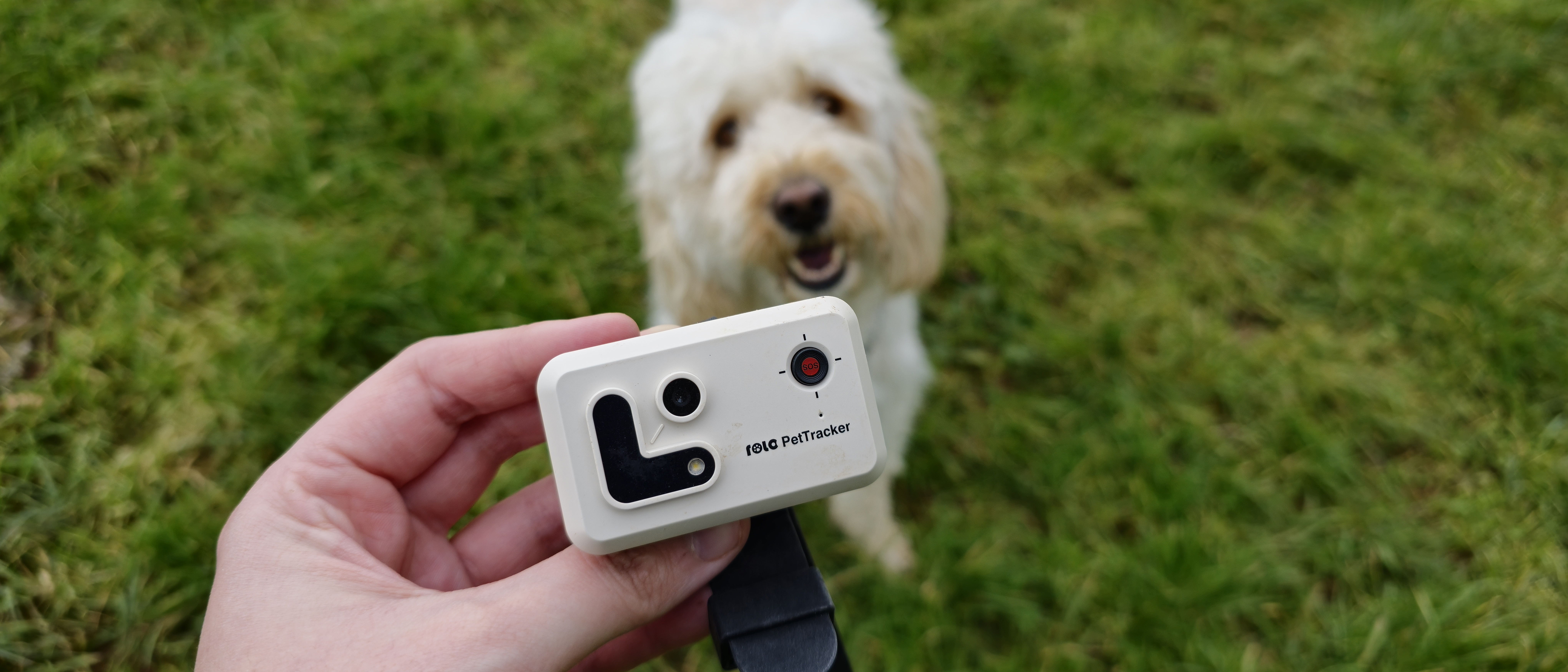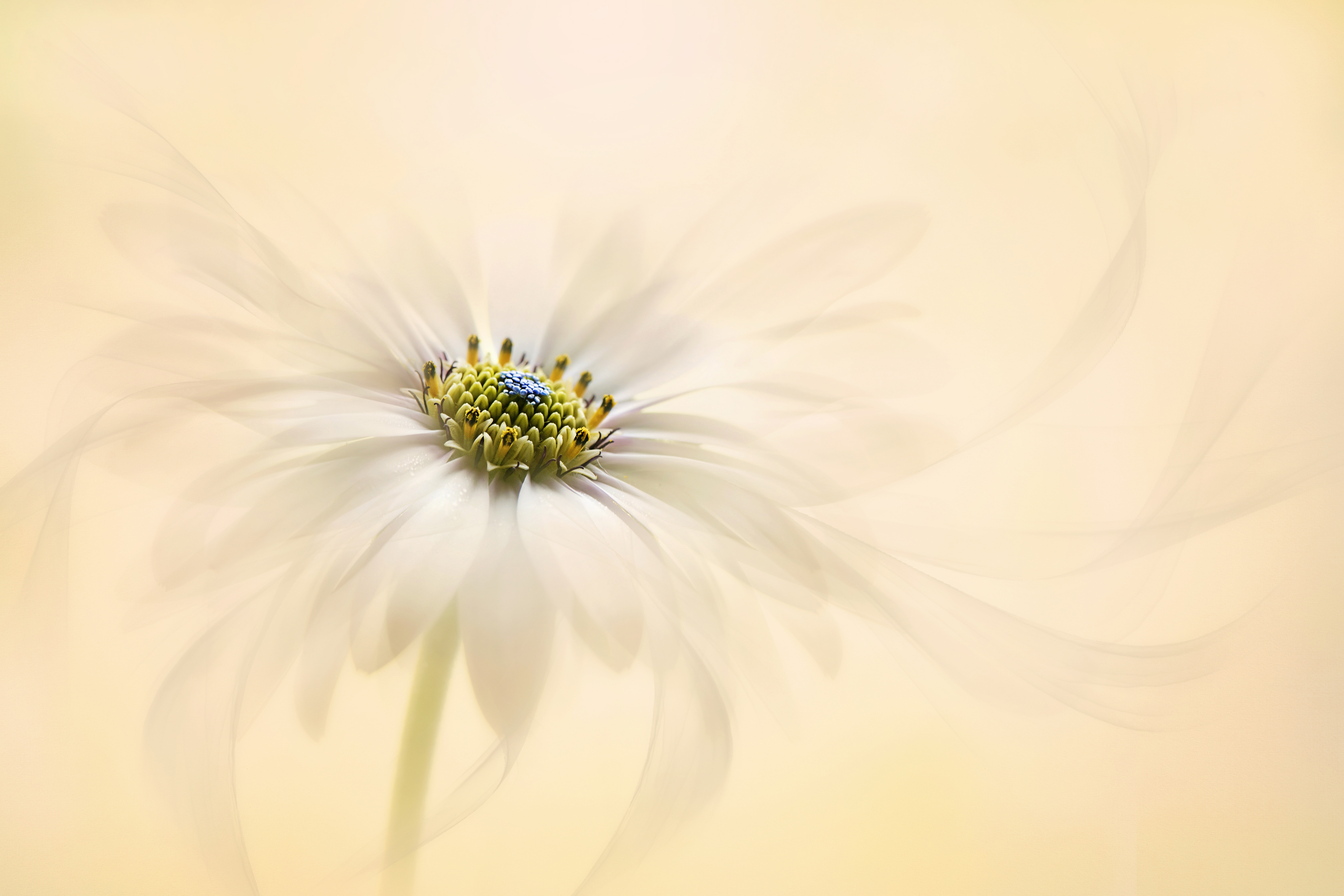
I am a macro flower photographer based in Sway, on the edge of the New Forest in England. I found my passion for macro flower photography while studying for a degree in horticulture back in 2005.
Having been married to a professional press photographer, I was able to draw
on his knowledge of the technical aspects of photography. Through nurturing this expertise, I now have an innate eye for composition and an appreciation of the natural world. Nature and flowers inspire me greatly, with an endless supply of color and texture in the garden, which bring a fresh opportunity each day.
• 5 things to know before buying a macro lens
My garden revolves around my love of photography, with many plants grown in pots that I’m able to move around and place where the light is best, always trying to avoid harsh sunlight and shadows.
My approach is casual, shooting handheld with minimal equipment. I’ll often shoot through foliage and other flowers to add depth to the image, creating a dreamlike effect. I use Photoshop to add additional layers and textures to my images, making sure that I keep the effect subtle so that the flower remains the point of focus.
Top tips for shooting flowers in the garden
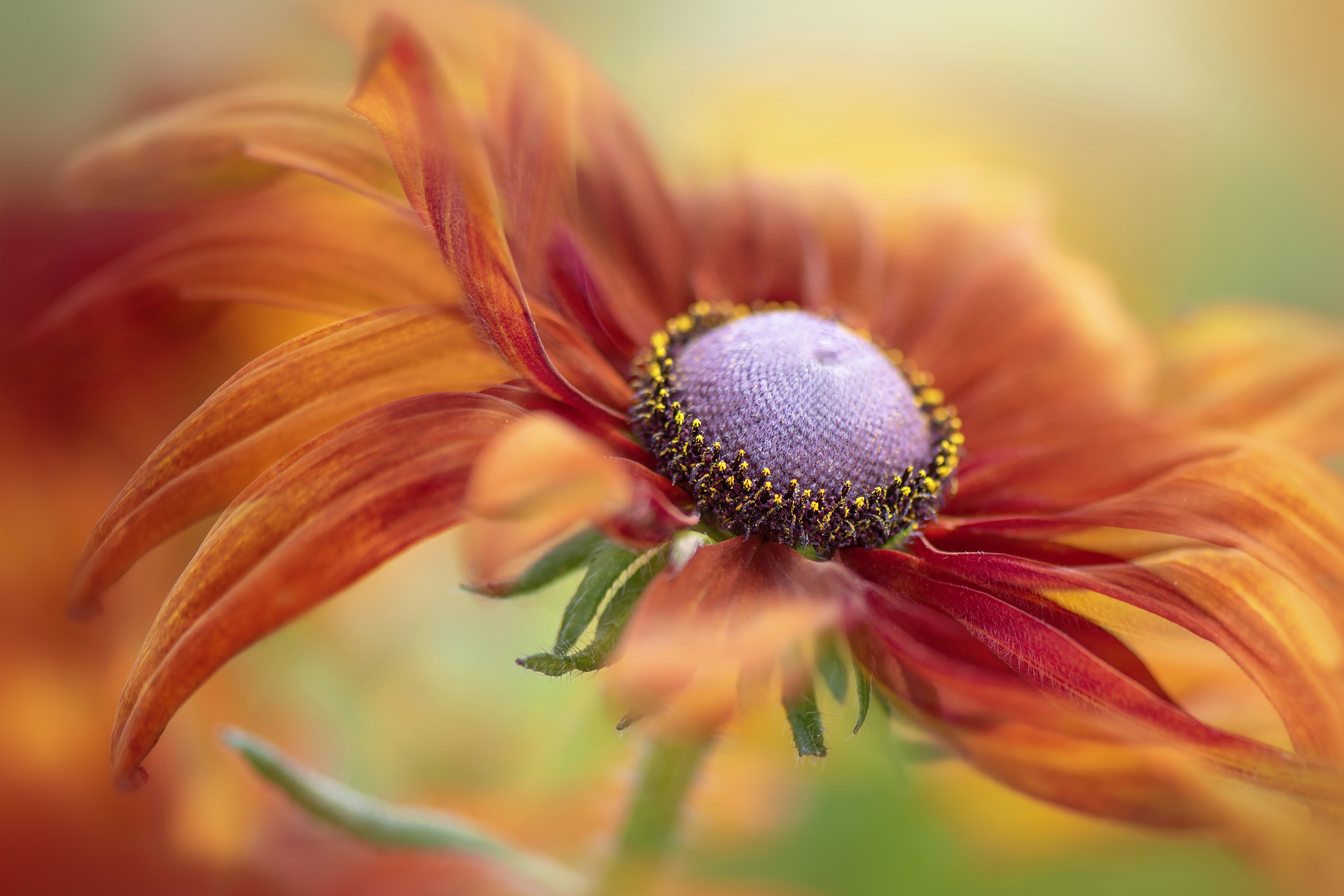
1) Gather your subjects
I picked a few spring Hellebore flowers – also known as Lenten roses – from my garden. The flower heads on these perennials face downwards, so they’re tricky to photograph. I used a few small paperclips to hold the flowers upwards, facing the camera.
• Best camera for macro photography in 2022
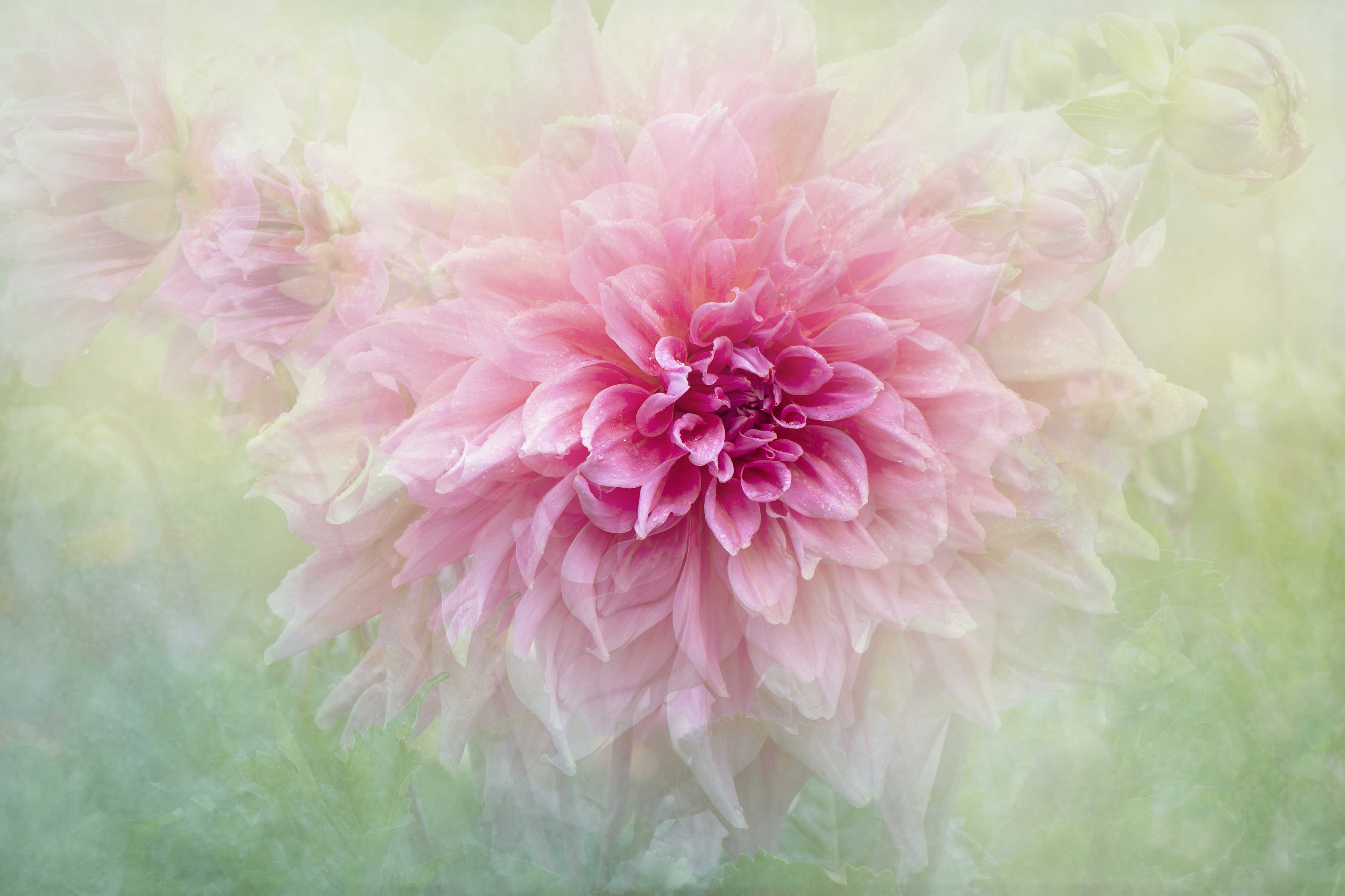
2) Use natural light
The flowers are placed in small vases on a table next to a light source – here, a patio window. The backdrop is a ‘Sail’ photo board from Photoboards.org, which worked well with the setup. I used a Nikon D750 and Nikkor 105mm f/2.8 lens for this image, mounted on a Manfrotto 055 tripod.
• The best geared tripod head in 2022

3) Camera settings
The camera settings were 1/100 sec at f/16, ISO 250. The image was processed in Camera Raw and Photoshop, where I used layer masks to add a soft texture, to control which part of the image to reveal – and it’s definitely worth trying out different brushes.
Jacky’s advice for successful shots
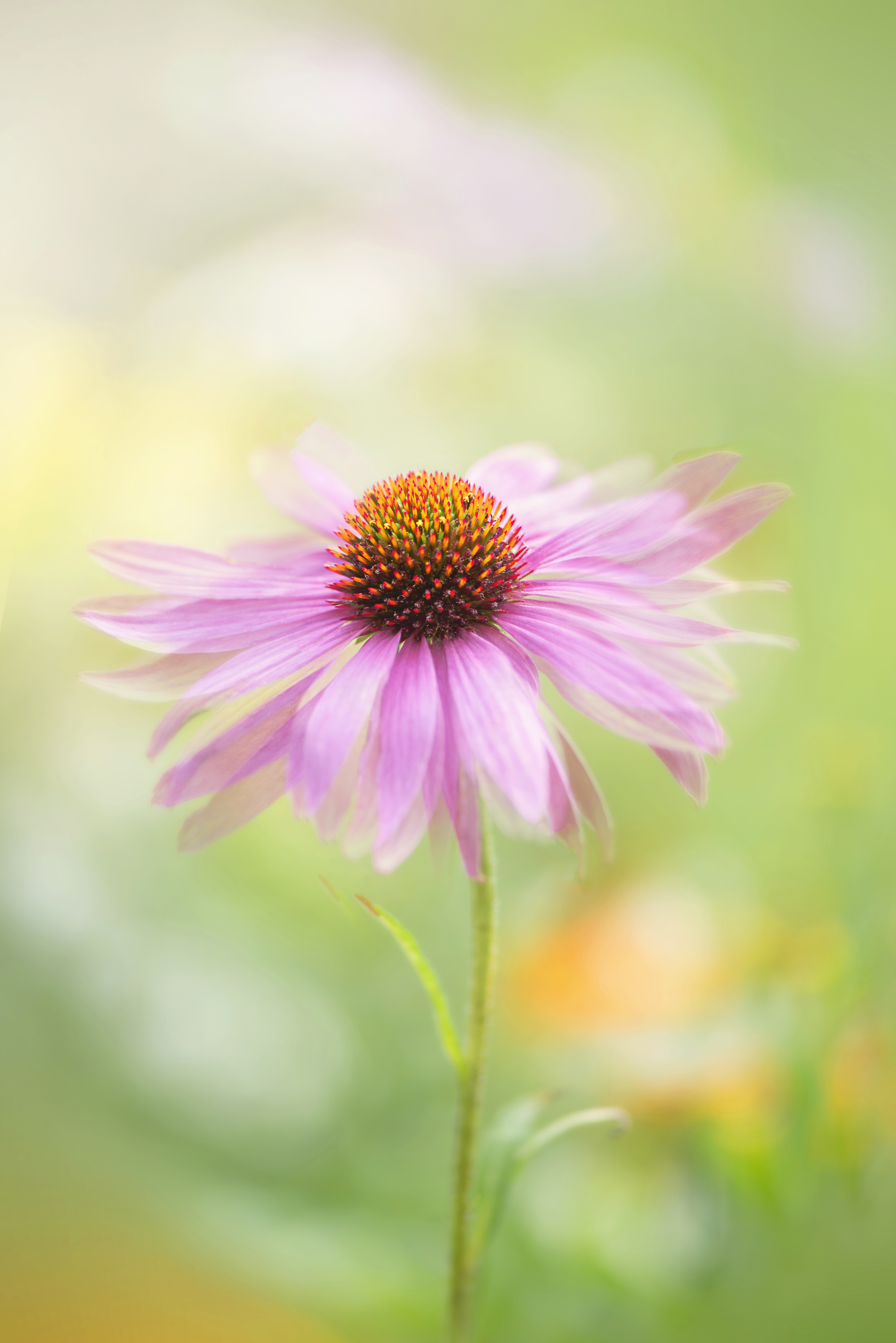
You don’t need to have a beautiful garden to shoot flowers! These three images were taken at local public gardens, all shot handheld on fairly bright/ overcast days to avoid harsh shadows.
I always carry a knee pad to get down low to see how the subject interacts with the surrounding light, removing any distracting objects from the foreground. You should always be aware of backgrounds – to soften them, I often use a shallow depth of field. Aim to make sure the centre of the flower is the centre of your focus, as this
will also draw the eye in. If possible, move around the plant to check for the best composition.
All these images were edited in Camera Raw, with the shadows and highlights adjusted. I used my ‘Floaty Petal’ technique on the flowers in Photoshop. To give the impression of movement in the petals, the images were duplicated and overlaid, rotated slightly at 60% opacity and areas painted in or revealed using layer masks.
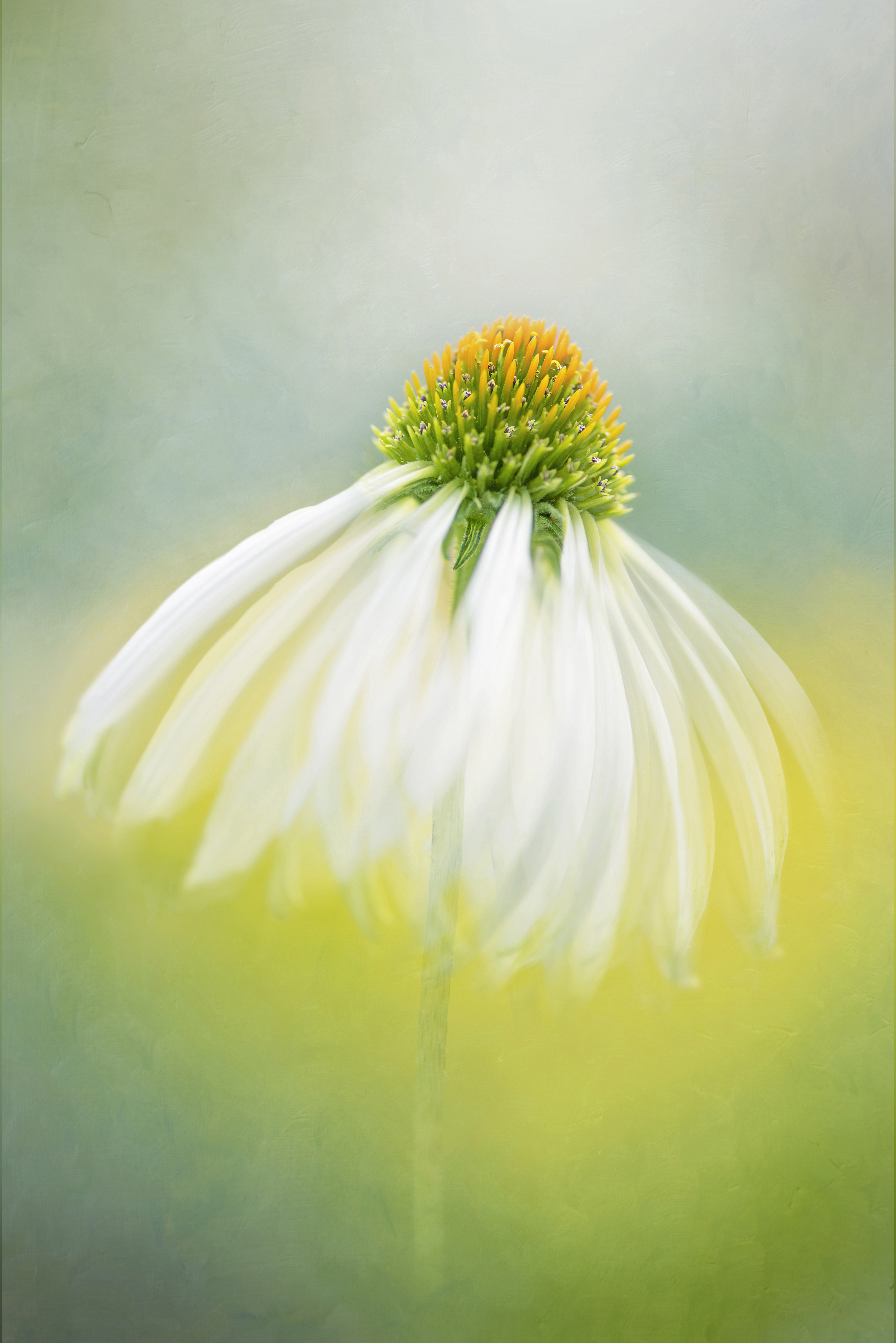
Creating a style
In my flower photography, I try to bring out an equal balance of detail, softness and movement, capturing the true spirit of nature and its seasons. I don’t have any preconceived ideas or visions when I venture out with my camera; I just try to relax and enjoy the moment.
For more of Jacky's work see his Instagram feed.
Read more:
Capture blooming brilliant flower shots with Affinity Photo
The best Nikon D750 deals in April 2022: stock updates and prices
Flower photographer John Holmes on creating a series of stunning abstracts
Get the Digital Camera World Newsletter
The best camera deals, reviews, product advice, and unmissable photography news, direct to your inbox!
Digital Camera World is one of the leading authorities on camera and photography news, reviews, techniques, tutorials, comparisons, deals and industry analysis. The site doesn't just specialize in cameras, but all aspects of photography, videography and imaging – including camera phones, gimbals, lenses, lighting, editing software, filters, tripods, laptops, printers, photo books, desks, binoculars and more.
Whether you're using, looking to buy or trying to get the most out of a compact camera, action camera, camera drone, cinema camera, beginner camera or professional camera, Digital Camera World has a roster of experts with combined experience of over 100 years when it comes to cameras, photography and imaging.

